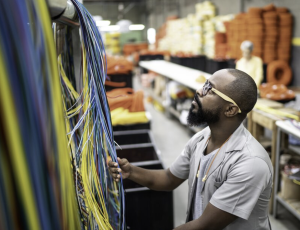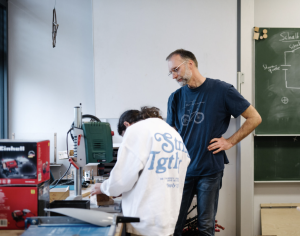In the 1980’s there was a shift away from vocations and trades taught in U.S. schools and a push towards liberal arts. All this coincided with growth of for-profit 4-year colleges literally becoming an industry and omnipresent messaging as college being THE path to the “American Dream.” In contrast other countries and cultures have steadfastly maintained the approach that education, and individuals in pursuit of career passions, aptitudes and interests are not one-size-fits-all. The United States has increasingly directed youth through a singular funnel toward college. And, positioned any other outcome or alternative as a lack of success. Elsewhere young people are guided/funneled towards a number paths to building a successful future, vocational and trades schools and apprenticeships are examples.

World Report From
Getty Images
Increasingly Americans are seeing investment in 4-year college as a risky bet. According to a New York Times Magazine article by Paul Tough, “Americans Are Losing Faith In The Value Of College.” He points to a 2010 survey in which 86% of college graduates viewed college as “a good investment.” And points to another a decade later where only 41% of young people said college was very important – down from 74%. He also writes that compared to college-focused parents of a decade ago, “nearly half of American parents now say they prefer their children not enroll in a 4-year college.
And honestly, when paying an interior designer, plumber, electrician, auto mechanic, web developer or event planner…. Has it ever caused you to reflect on your time and investment in your degree and the hours you put in working? A high school friend of my son had no interest in college. He’s a mechanical whiz. He loves building things. Even in high school he was literally building motorcycles. Casually wandering around a career fair at school he walked over to the Tesla booth. When asked about college plans he explained that he had none. He told the rep his love was building motorcycles and he hoped he could make a career of that. He showed the Tesla rep some pictures of motorcycles he’d built. He was hired at their sister company SpaceX and now builds rocket ships.
U.S. News And World Report says, “4-year colleges are getting serious competition from institutions teaching trades.” According to U.S. News, The National Student Clearinghouse Research Center reported that enrollment in vocational programs rose 16% just from 2022 to 2023. In an article by Erica Sandberg, she makes the case why trade school “might be the best personal finance decision.”

For The Hechinger
Report
In her article for The Hechinger Report Brussels-based journalist Frieda Klotz suggests, that with interest in vocational training rising in the U.S., and elsewhere, there’s a program in Germany that could be the model to adopt. The program. Kein Anschluss (KAoA) – “no graduation without connection,” is being rolled out across the Germany state of North Rhine Westphalia. The goal of the program is to help students better plan their futures. Beginning in 9th grade students get help with resumes and job applications. They participate in short-term internships with local businesses. And in the 10th grade they have the option to do a year-long, 1 day a week work placement.
In her article journalist Klotz quotes Sonia Gryzick, a teacher who teaches, English, math and career orientation, at a school in the German state, “You don’t learn about a job in a school. You learn by experiencing it.” And students aren’t locked in. That experience may confirm their interest or set them on a new path. By the time they finish school they may have experienced more than one job before opting for their best fit. In the U.S. students are often literally locked into a college track by age 10, or much earlier. Alternatively, students in Germany can embark on their vocational tracks in the 10th grade at age 16. While those opting for a university path will spend 3 more years in academic school culminating with a university entrance exam. This is all based on a vocational system which has been in place literally hundreds of years. And it is credited with keeping youth unemployment down.
In Klotz’s article author and entrepreneur Ryan Craig says, “Many of the best jobs in our country (the United States) don’t require a college education.” And he has demonstrated this perspective in action. Achieve Partners, of which he is a Managing Director, reports launching 100,000 careers via apprenticeships over the past 10 years. And estimates an average $17,000 salary increase per person from what they were earning prior to completing their Achieve Partners company-placed apprenticeship.
According to Klotz, Germany’s KAoA program is part of a wave of initiatives not just focused on engaging student opting for the vocational track in the workforce. All 9th and 10th graders, even those intent on attending university, in the German state must participate in a 3-week practical internship. The idea is to get all students thinking more concretely about their futures. Though university is free in Germany Klotz notes as well, that those on the vocational track can actually achieve financial independence sooner.
While Germany and many other countries are lightyears ahead of the U.S. We all need to get onboard to share, encourage and embrace initiating, supporting and fostering alternative opportunities to 4-year college to secure financially rewarding and personally fulfilling careers for those seeking a different path.
